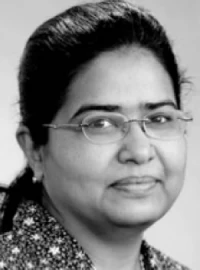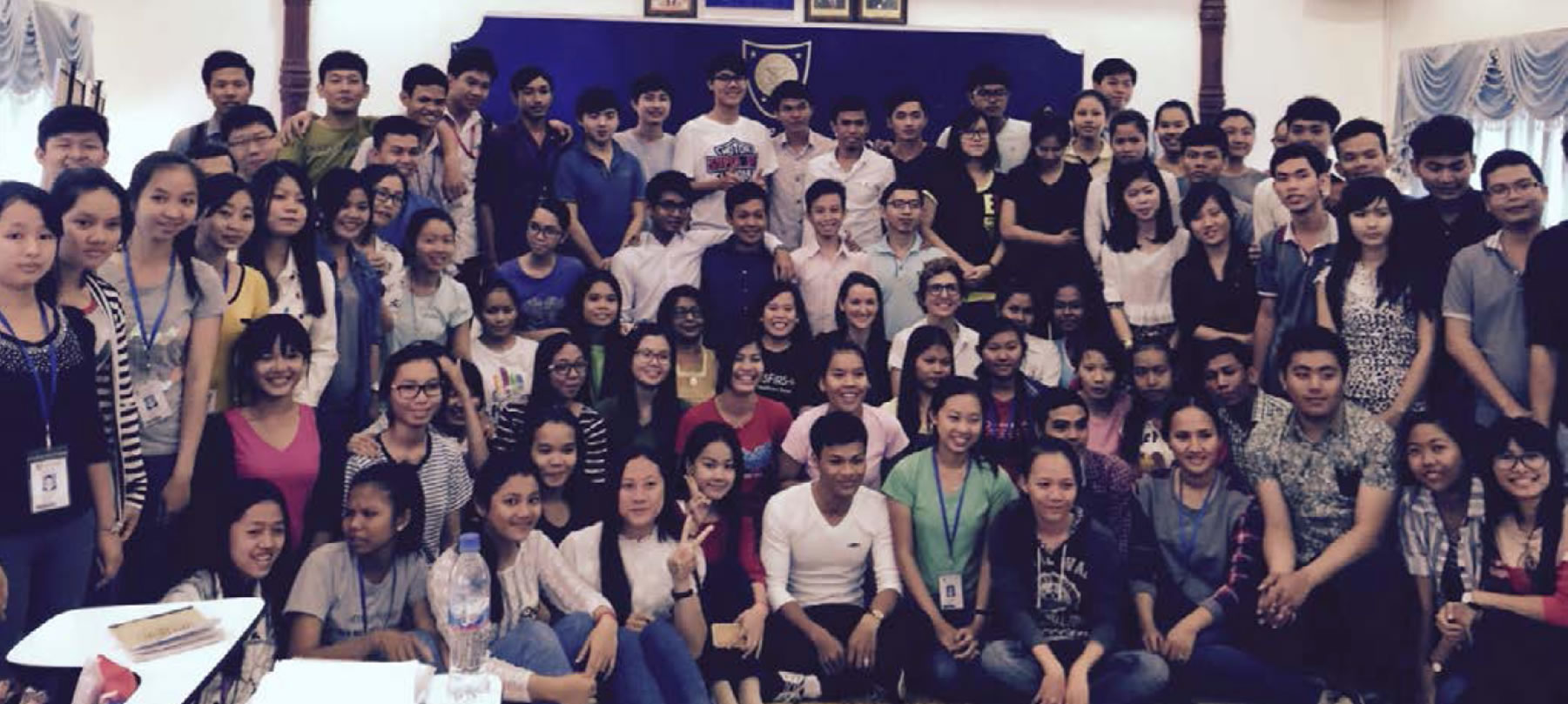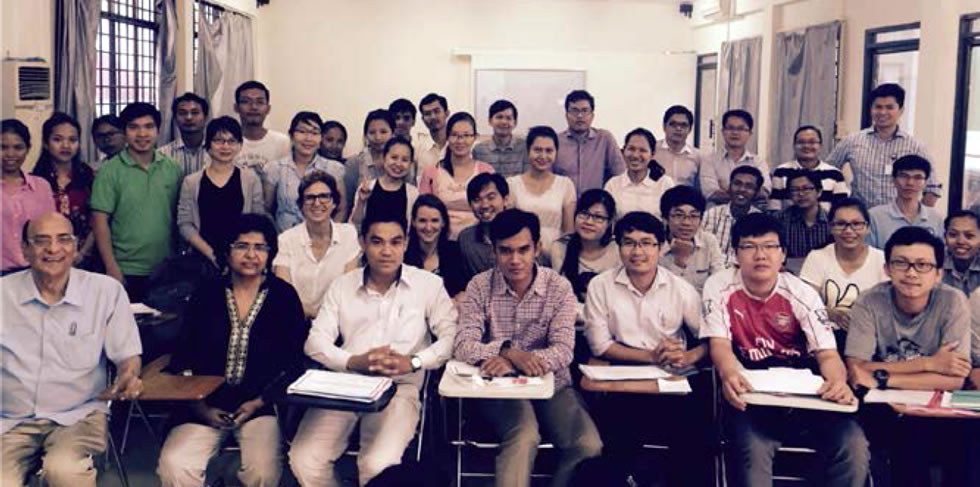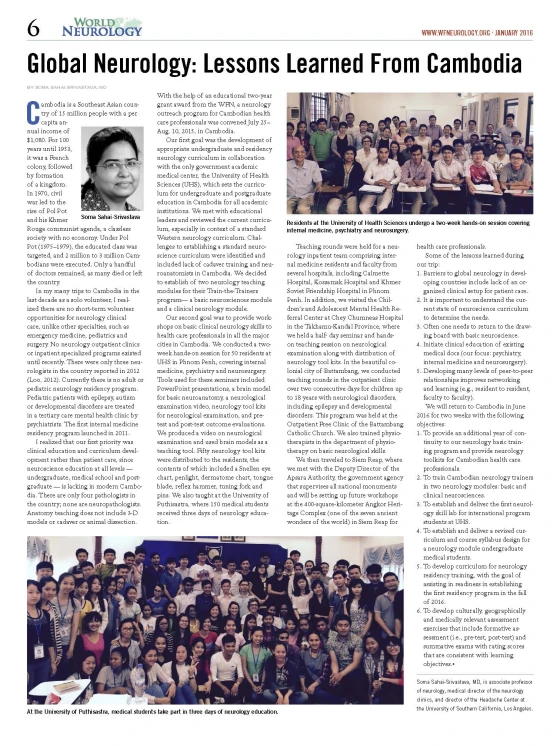Abridged from original article by Soma Sahai-Srivastava, MD, published 22 January 2016 in World Neurology Vol 31 No. 1
 |
Soma Sahai-Srivastava, MD |
Cambodia is a Southeast Asian country of 15 million people with a per capita annual income of $1,080. For 100 years until 1953, it was a French colony, followed by the formation of a kingdom. In 1970, civil war led to the rise of Pol Pot and his Khmer Rouge communist agenda, a classless society with no economy. Under Pol Pot (1975–1979), the educated class was targeted, and 2 million to 3 million Cambodians were executed. Only a handful of doctors remained, as many died or left the country.
In my many trips to Cambodia in the last decade as a solo volunteer, I realised there are no short-term volunteer opportunities for neurology clinical care, unlike other specialties, such as emergency medicine, paediatrics and surgery. No neurology outpatient clinics or inpatient specialized programs existed until recently. There were only three neurologists in the country reported in 2012 (Loo, 2012). Currently there is no adult or pediatric neurology residency program. Pediatric patients with epilepsy, autism or developmental disorders are treated in a tertiary care mental health clinic by psychiatrists. The first internal medicine residency program launched in 2011.
I realized that our first priority was clinical education and curriculum development rather than patient care, since neuroscience education at all levels —undergraduate, medical school and postgraduate — is lacking in modern Cambodia. There are only four pathologists in the country; none are neuropathologists. Anatomy teaching does not include 3-D models or cadaver or animal dissection. With the help of an educational two-year grant award from the WFN, a neurology outreach program for Cambodian health care professionals was convened July 25–Aug. 10, 2015, in Cambodia.
Our first goal was the development of appropriate undergraduate and residency neurology curriculum in collaboration with the only government academic medical centre, the University of Health Sciences (UHS), which sets the curriculum for undergraduate and postgraduate education in Cambodia for all academic institutions.
Our second goal was to provide workshops on basic clinical neurology skills to health care professionals in all the major cities in Cambodia.
Some of the lessons learned during our trip:
- Barriers to global neurology in developing countries include lack of an organized clinical setup for patient care.
- It is important to understand the current state of neuroscience curriculum to determine the needs.
- Often one needs to return to the drawing board with basic neuroscience.
- Initiate clinical education of existing medical docs (our focus: psychiatry, internal medicine and neurosurgery).
- Developing many levels of peer-to-peer relationships improves networking and learning (e.g., resident to resident, faculty to faculty).
We will return to Cambodia in June 2016 for two weeks with the following objectives:
- To provide an additional year of continuity to our neurology basic training program and provide neurology toolkits for Cambodian health care professionals.
- To train Cambodian neurology trainers in two neurology modules: basic and clinical neurosciences.
- To establish and deliver the first neurology skill lab for international program students at UHS.
- To establish and deliver a revised curriculum and course syllabus design for a neurology module undergraduate medical students.
- To develop curriculum for neurology residency training, with the goal of assisting in readiness in establishing the first residency program in the fall of 2016.
- To develop culturally, geographically and medically relevant assessment exercises that include formative assessment (i.e., pre-test, post-test) and summative exams with rating scores that are consistent with learning objectives.

At the University of Puthisastra, medical students take part in three days of neurology education.
At the time of print, Soma Sahai-Srivastava, MD, is associate professor of neurology, medical director of the neurology clinics, and director of the Headache Center at the University of Southern California, Los Angeles.









